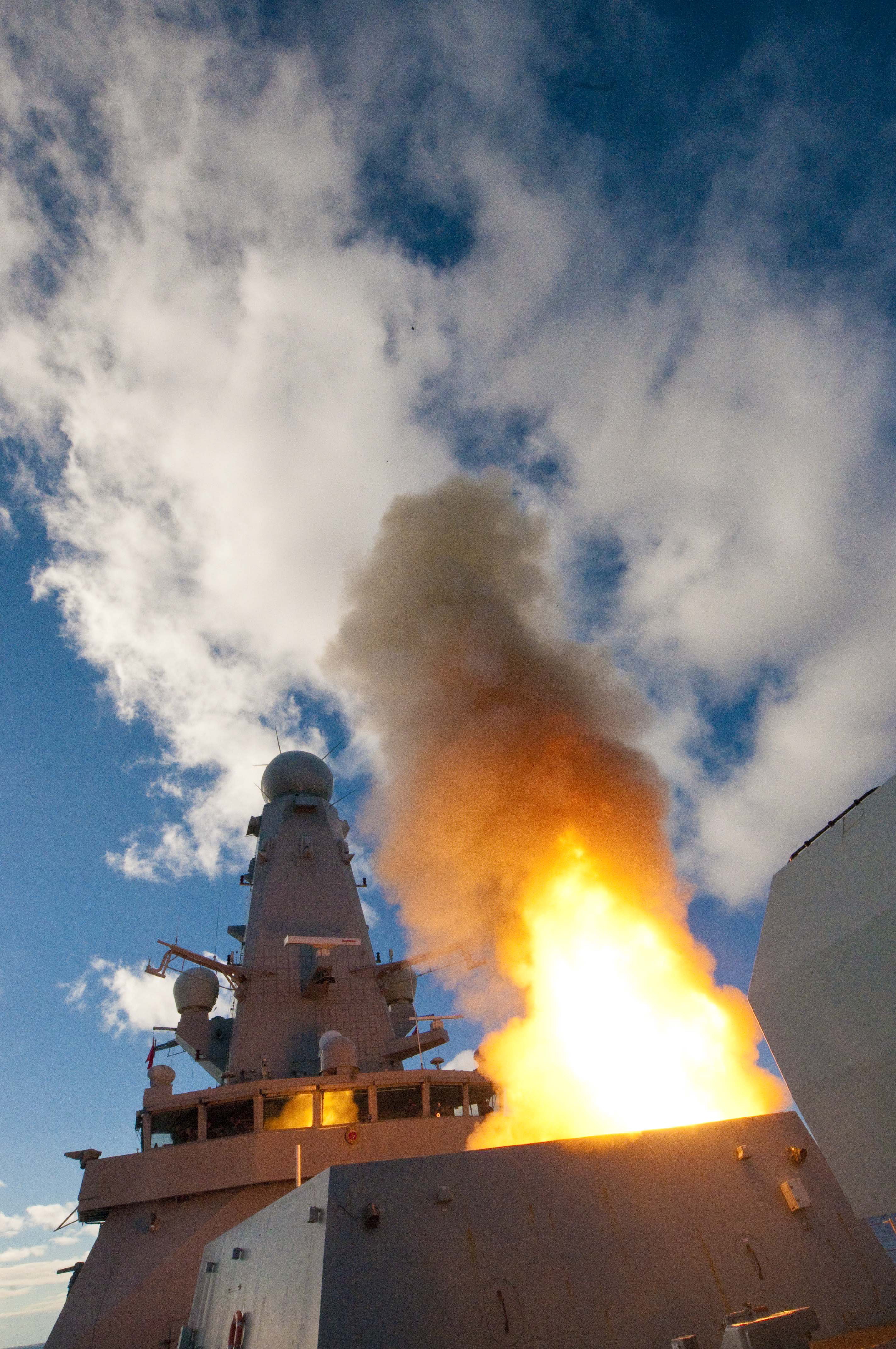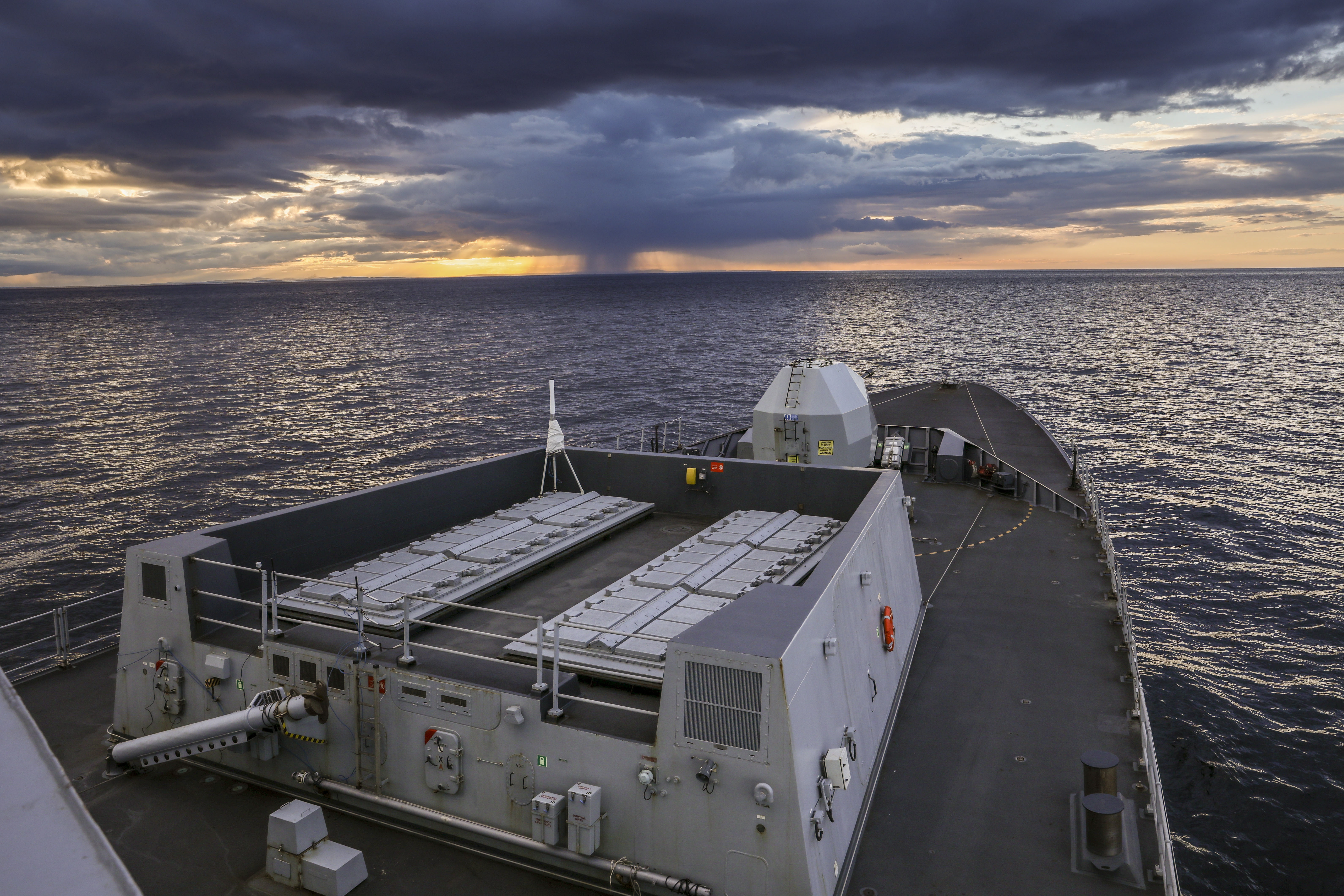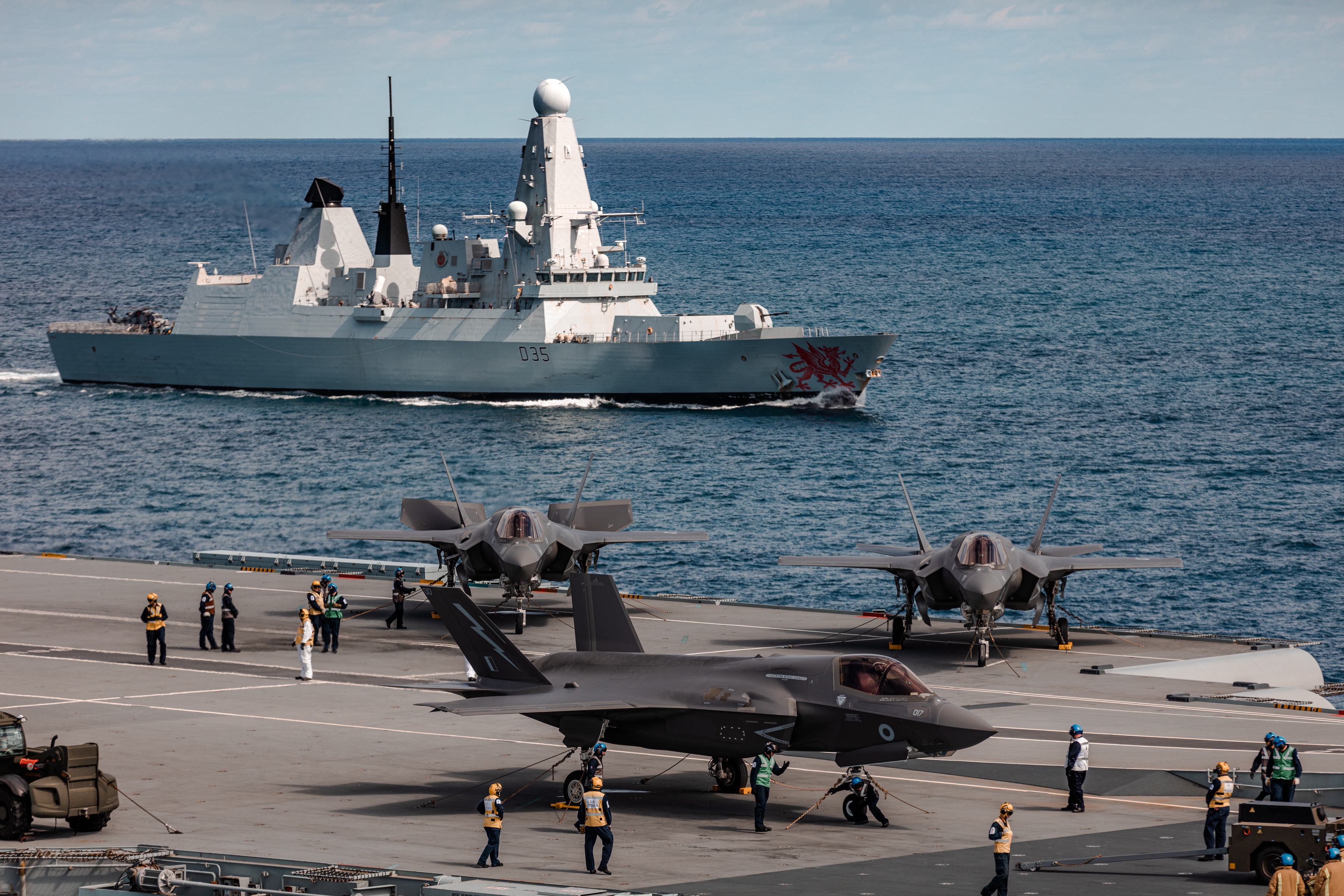The Royal Navy’s Type 45, or Daring class, destroyers will receive additional surface-to-air missiles as part of a weapons refit, marking a major increase in firepower for the warships. Once the new Sea Ceptor weapons are fitted, the six Type 45s, which provide area defense for the U.K.’s Carrier Strike Group, among other duties, will increase their air defense missile payloads by 50 percent.
The U.K. Ministry of Defense today announced the $692-million refit for the Type 45s, with the 11-year contract to integrate the Sea Ceptor missile going to MBDA UK, the British arm of the pan-European missile house. The half-dozen warships will each get 24 launch cells for the new missiles, for a total of 72 air defense missiles per ship.

“Enhancing our destroyer capabilities, this investment reaffirms our commitment to equip the Royal Navy with the most advanced and powerful defensive systems,” said Minister for Defense Procurement, Jeremy Quin. “This upgrade ensures the Type 45 remains hugely respected by naval fleets across the globe and secures highly-skilled jobs and investment.”
“These programs will provide an exceptional capability to the front line, ensuring the RN remains poised to defend the surface fleet, and most importantly the Carrier Strike Group, against complex air threats both now and into the future,” added the Royal Navy Fleet Commander, Vice Admiral Jerry Kyd CBE.
Under the refit, the Type 45 destroyers’ Sea Viper weapon systems will be fitted with a new 24-round silo for MBDA UK’s Sea Ceptor, also known as the Common Anti-Air Modular Missile, or CAMM. This launcher will be added in front of the existing 48-cell Sylver launcher for short-range Aster 15 and long-range Aster 30 surface-to-air missiles.

In the future, the Type 45s will be armed with the 24 Sea Ceptors for close-in and local-area defense, while the original 48 Sylver cells will be used exclusively for the longer-range Aster 30.
The Sea Ceptor is derived from the air-launched ASRAAM, used by the United Kingdom and Australia, and the naval version was originally developed to replace the Cold War-era Sea Wolf missile. Compared to the ASRAAM, the Sea Ceptor family utilizes a British-made active radar seeker, rather than an American infrared seeker. Weighing around 220 pounds, the CAMM flies at a speed of Mach 2.5 and can hit a target at over 15 miles, according to official figures, although unconfirmed reports suggest it may have destroyed targets at over 35 miles during trials.
In contrast, the Aster 15 weighs around 680 pounds, including its separate booster section, and has a range of around 18 miles. The Aster 30 tips the scales at around 1,000 pounds and is able to engage targets at more than 75 miles.
MBDA has also confirmed that the Sea Viper command and control (C2) system will be subject to a technology upgrade, giving it “a major increase in processing power.”

As well as the new Sea Ceptor missiles, the Type 45 destroyers will also receive “a refresh” for the Aster 30s already in use. This is being covered by a separate, 10-year contract, signed with Eurosam. That work is being completed as part of a wider program, together with the navies of France and Italy, which also use the missile for outer-layer defense. This will keep the Aster 30 in service throughout the life of the Type 45s. Currently, these warships are expected to be replaced by the new Type 83 destroyer in the late 2030s.
According to the U.K. Ministry of Defense, the weapons refit is enabled by an increase in defense spending amounting to around $33 billion over the next four years, a plan that was first announced last November.
The plan to “boost the lethality of the surface fleet” was further outlined in the Defense Command Paper, the U.K’s latest defense review document that was released last March.
There had been speculation in the past that the additional space in the Type 45s may have been used to install the American Mk 41 vertical launch system (VLS), instead of Sea Ceptor cells. That would have permitted the destroyers to carry Tomahawk Land Attack Missiles (TLAM) as well as SM-3 or SM-6 missiles for defense against ballistic missiles and hypersonic weapons. For the Royal Navy, there remains the option to add in the future the Aster 30 Block 1NT which will also offer an anti-ballistic missile capability, while the Mk 41 will meanwhile be installed in the new Type 26 frigates.
Nevertheless, the introduction of Sea Ceptor, which is already used on the Royal Navy’s upgraded Type 23 class frigates, will provide the Type 45s with an additional defensive layer. As well as tackling conventional high-speed aerial threats, the missile is also expected to engage “small, fast inshore attack craft, hovering helicopters, and low-speed targets.”

In ground-launched form, the CAMM is already in service with the British Army, while the Sea Ceptor will also arm the future Type 26 and Type 31 frigates and the missile has recently been ordered by Brazil and Canada.

The first Type 45 destroyer is expected to have been overhauled with the new missiles by summer 2026.
The relevance of the weapons upgrade will be felt particularly by the Carrier Strike Group, the U.K.’s newly regenerated maritime task forces based around the pair of Queen Elizabeth class aircraft carriers.

“The introduction of the UK produced CAMM missile in conjunction with the current Aster 30 missile will provide the Type 45 with a significant uplift in anti-air capability into the future as the Type 45 delivers the backbone of air defense to the Royal Navy’s Carrier Strike Group,” said Sir Simon Bollom, CEO of Defense Equipment & Support (DE&S), the Ministry of Defense’s procurement arm.
In the past, The War Zone has looked at some of the deficiencies in the organic air defenses of the 70,000-ton Queen Elizabeth class carriers.
These warships are equipped with three Mk 15 Phalanx close-in weapon systems (CIWS), capable against traditional anti-ship cruise missiles and small unmanned aircraft and boats, but generally installed on warships as a last-ditch measure against any threats that might have “leaked” through the outer defensive layer, rather than the only defense.
What is more, in a high-threat environment, an attack against a carrier is likely to involve barrages of different weapons, requiring a number of weapons and tactics to counter them. Increasingly, these threats may include higher-end hypersonic and stealthy cruise missiles. The Sea Ceptor, in particular, is claimed to offer an anti-cruise missile capability.
As such, defense of the carrier rests, to a significant degree, on the Type 45s, two of which will routinely accompany each Carrier Strike Group, bolstered by other NATO vessels.
For its part, the Type 45 has had problems with maintainability in the past, with some well-publicized reliability issues, especially when on deployment, leading to difficulties in putting to sea. These problems have since been addressed with an upgrade to the diesel generators as part of a two-phase program, called Project Napier.
As it stands, increasing the Type 45’s air defense missile capacity from 48 to 72 weapons will provide a significant increase in total firepower to these in-demand warships, as well as helping reinforce the defensive umbrella around the Carrier Strike Groups. At the same time, the U.K. destroyer fleet is still relatively small, especially if the plan is for two of them to be part of any future Carrier Strike Group.
However, outside of the Carrier Strike Groups, adding Sea Ceptor is certain to be a valuable additional defense for any grouping that a Type 45 is part of, as well as just for these ships operating independently, in general. This is especially true when operating in more contested waters, as evidenced by recent encounters with Russian warships and aircraft in the eastern Mediterranean, and in the Black Sea.
Contact the author: thomas@thedrive.com
